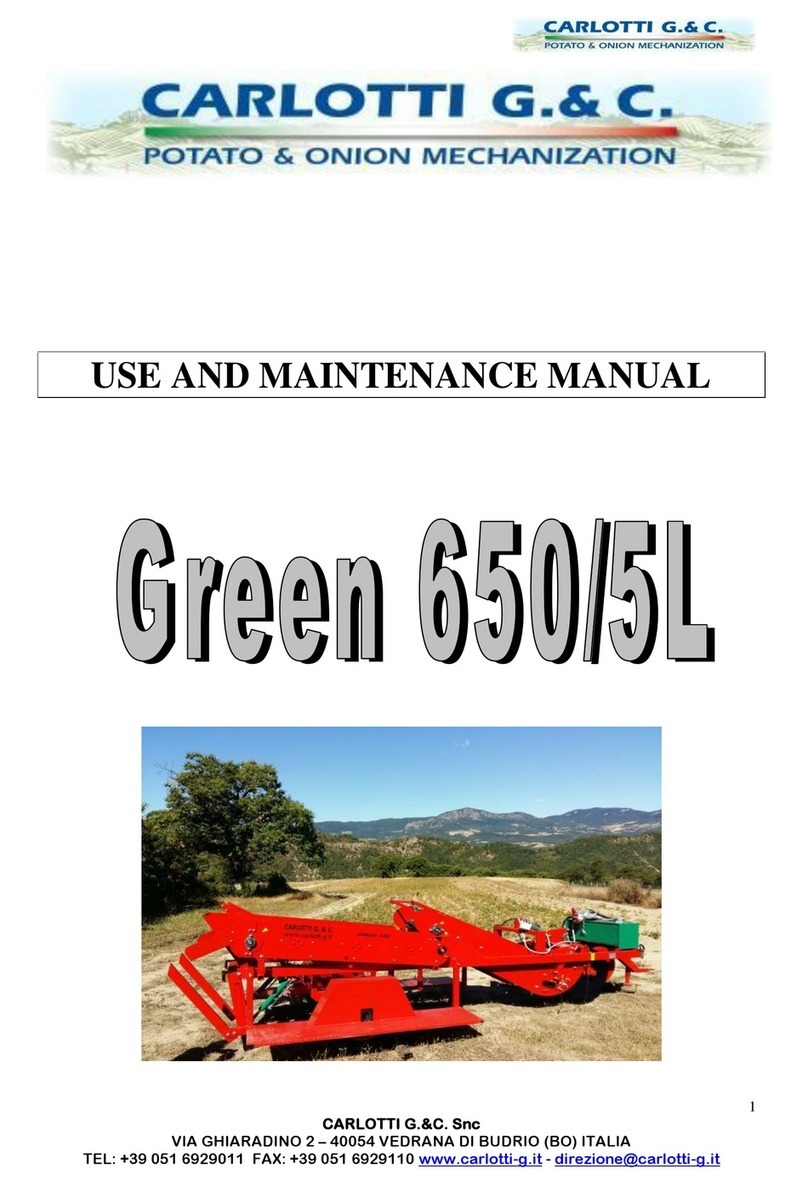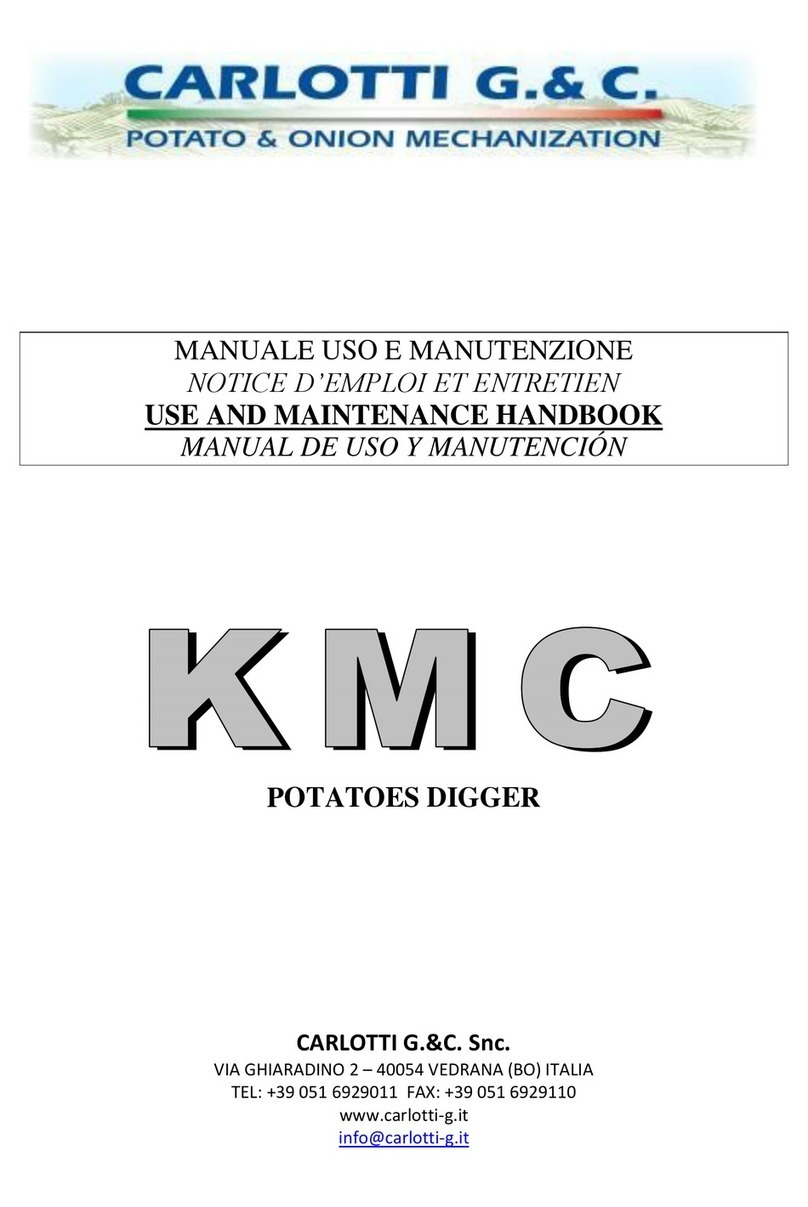1. WARNINGS
This manual was created to provide all the information necessary to use the equipment correctly and
safely, and to maintain it.
It is essential to read this manual before using the SPRING 750/35 model potato digger and
harvester/onion harvester machine.
Keep this manual even after fully reading it, so that it is always available for the clarification of any
uncertainties.
This manual is an integral part of the machine and must be kept with care for the entire
working life of the machine. In case of loss, contact the Manufacturer and request a new copy.
In case of problems in understanding this manual or parts of it, it is highly recommended to contact
Carlotti G.&C. Snc Via Ghiaradino 2 –40054 Budrio (BO) Italy tel. +39 0516929011 –fax +39 051
6929110
1.1 Safety
To avoid an accident it is important to recognise potentially dangerous situations!
1- It is advisable to familiarise yourself with this manual and with the machine before using it. During
reading, it is advisable to pay particular attention to the movements of the mechanisms, to their
adjustment and maintenance.
2- Before and during work, refrain from using alcohol, drugs or other substances that could alter
physical and mental abilities.
3- Before using the machine, carefully check the correct operation of the machine and of the tractor.
Keep unauthorised persons away from the work during use.
4- During use the speed must be adequately limited, and special precautions must be taken during field
entry and exit manoeuvres.
5- During breaks and at the end of processing, make sure that the machine has been disconnected
from the tractor and is resting on the foot. The tractor must be switched off and with the keys
disengaged from the panel.
6- It is advisable to exercise special precautions when connecting the machine to the tractor.
7- Repairs, adjustments, cleaning and maintenance must be carried out with the engine switched off
and with the keys removed from the panel.
Most of the accidents that occur when working with machines or equipment and during their
maintenance and repair are due to failure to comply with basic safety precautions. Many of
these accidents occur during movement of the tractor - equipment complex on the road and
within the company premises.
The following are strictly forbidden:
-To use the machine without having carefully read the use and maintenance manual.
-Lubricate, adjust or repair when the machine is connected to the tractor.
-To use the machine or a tractor when they are not fully functional.
-To allow persons who are not competent and therefore not authorised to use the machine and the
tractor.
-To perform sudden inversions, abrupt or imprudent manoeuvres.
-To leave the tractor and the machine in the working position.
-To work on slopes and hills without exercising the necessary precautions.





























